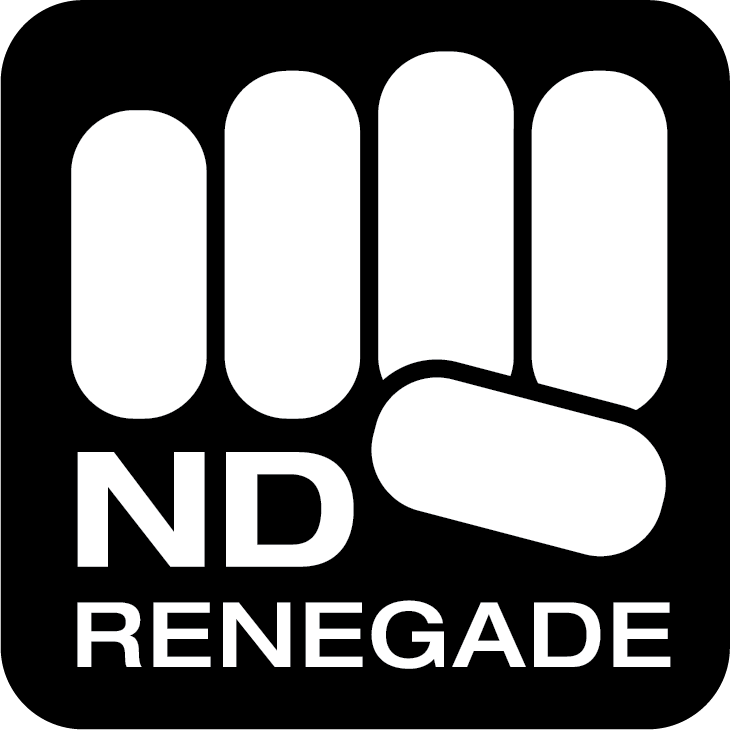Educate Yourself
We thought an educational page might be helpful for some people, so here we go.
A Note on the Terms Neurodiversity, Neurodiverse and Neurodivergent
Neurodiveristy is the concept that variance in the human brain is natural and to be accepted just like any other biological human trait. It was coined by Australian autistic sociologist Judy Singer and first used in the late 1990s. The neurodiversity movement accepts these neurological differences (such as autism, ADHD, dyslexia, dyspraxia, Tourette Syndrome, apraxia, to name a few), but also respects that they are a disability. These differences are what make people unique.
Neurodiverse is the term used to describe a group of people that contains different neurotypes. This could also include neurotypical (NT) people, but must also include neurodivergent (ND) people as well. Only groups can be neurodiverse; a person is neurodivergent.
Neurodivergent (ND) is the term used for people with brains that are not neurotypical. A person is neurodivergent if they are autistic, ADHD, dyslexic, dyspraxic or are any of the other neurotypes. We don't say a person is neurodiverse, we say a person is neurodivergent.
A Note on the Terms Asperger's and Aspie
Asperger Syndrome is a diagnosis that was recognised in the DSM-4 in 1994 but phased out in the DSM-5 in 2013. It is now part of the broader category of Autism Spectrum Disorder. There are countries that do officially use this as a diagnosis, however that is changing. It was and still is used to describe autistic people who have good cognitive and language skills (although they still have difficulties with communication and social interaction), people who have 'a dash of autism'.
This is problematic in more ways than one. Hans Asperger was an Austrian paediatrician who documented his observations about autism. In 1981, psychiatrist Lorna Wing brought Asperger's observations to the attention of the English-speaking world, coining the term Asperger's Syndrome. Hans Asperger was complicit in the Nazi effort to classify the German, Austrian and Hungarian (and beyond) population as fit or unfit to breed. They were trying to create a 'pure' race, and Hans Asperger was one of the medical staff who chose children to send to Vienna's Am Spiegelgrund, which was a child euthanasia clinic. He sorted children according to their cognitive ability and whether or not they were a burden on their families and society. More than 800 children were killed in Am Spiegelgrund as part of Aktion T4. Many autistic people do not like the terms Asperger's and Aspie because of the complicity of Hans Asperger.
There is another reason many autistic people do not like the terms. They feel that the terms are separatist, causing a divide in the autistic community, identifying the 'higher functioning' autistic people from the ones who aren't as capable. This is often used to explain a person's condition to neurotypicals, in a way of saying "I'm autistic but I'm not THAT autistic." This does not take into account that most autistic people do what is called 'masking', which can be very damaging to their mental health. Autistic people's abilities to function in different ways vary from day to day, and these functioning labels and this hierarchy is misleading. There isn't a better form of autism. Autism is autism, and comes with personal gifts and challenges for every autistic individual.
Why do we carry the Aspie designs in our store? Because we are inclusive and there are many autistic people who identify with the term. They have their reasons too. They were either diagnosed as having Asperger Syndrome, they are trying to find a like-minded group of people, they are more comfortable telling people they are Aspie, or they live in countries where the diagnosis is valid. Many people feel like the terms are part of their identity, and are an easy way to differentiate their cognitive style. Many people feel that it is a classification within autism that allows their needs to be better addressed. ND Renegade is here to start conversations and educate, not tell people how they should or should not identify.
A Note on the Word Takiwātanga
The word Takiwātanga is the Māori word for autism. It was coined by Keri Opai, who created a glossary of te reo Māori terms used in the Mental Health, Addiction and Disability sectors entitled “Te Reo Hāpai – The Language of Enrichment”. Takiwātanga means "In his/her own space and time." We love this definition of autism. Keri Opai has given us his endorsement to print Takiwātanga on our clothing. Boo and Bear are of Māori lineage and are currently learning about Māori culture and the unique way Māori have of looking at our world.
A Guide to Online Safety for Autistics
https://www.wizcase.com/blog/internet-safety-guide-for-people-with-autism-spectrum-disorders/
Sally has written a book for parents of newly diagnosed autistic children. It is a quick read, full of information and supportive tips. You can purchase a copy here:
After Your Child's Autism Diagnosis
